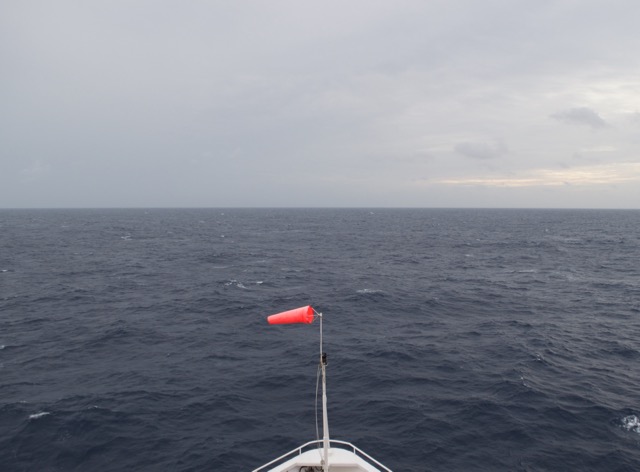
in transit
The horizon doesn’t change much as we transit through the Indian Ocean at 14 knots (25 kmph=16 mph–I’m told this is fast). We’re motoring at a bearing of 103º from port in Colombo, Sri Lanka, to our drill sites in the eastern Indian Ocean. We should get to our first site tomorrow morning. In the meantime,
we’ve been adjusting to life at sea on a research vessel. Safety briefings, life boat drills, lab tours, sampling methods, research protocol, seasickness—there is so much to learn and get used to!
A big adjustment is to shift to our assigned working hours. Everyone on the JR works 12 hours, with the other 12 hours free time to eat, sleep, exercise in the gym, watch movies in the TV lounge, or just hang out on the “steel beach” on the top deck of the ship. The scientists work 12 to 12—midnight to noon or noon to midnight. Some technical staff work 6 to 6, some daytime, some nighttime. Meals are 5-7 and 11-1, both am and pm. Each meal is breakfast for some, lunch for another shift, and dinner for others. Wishing someone “good morning” when you get up may be out of place since they’re eating their dinner. The scientists and educators have spent their first few days on the same daytime shift, but we’re diverging into our different groups as we get closer to getting core out of the ocean floor. Once we have core, we’ll be working hard at all hours to find out all we can about the nature of the sediments on the seafloor that make their way into the Sumatra Seismogenic Zone.
The scientists have been discussing how they will test their hypotheses and carry out their measurements, observations, and sampling. Keep an eye out for more details–for now it’s my bedtime!